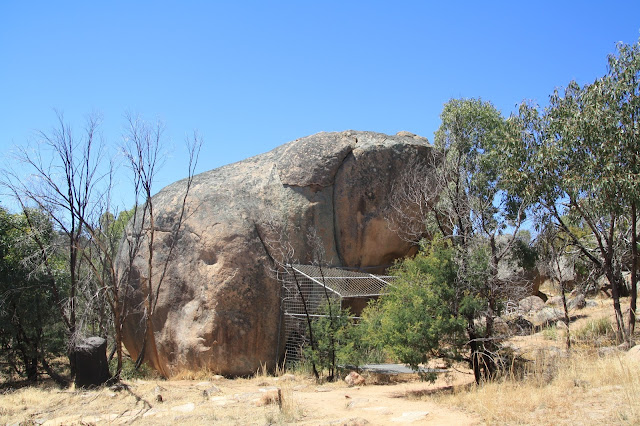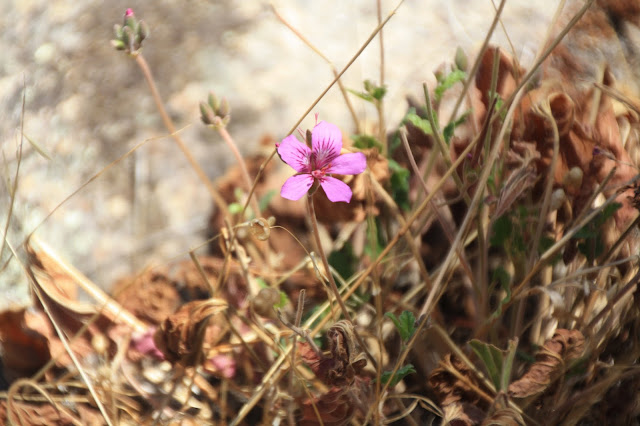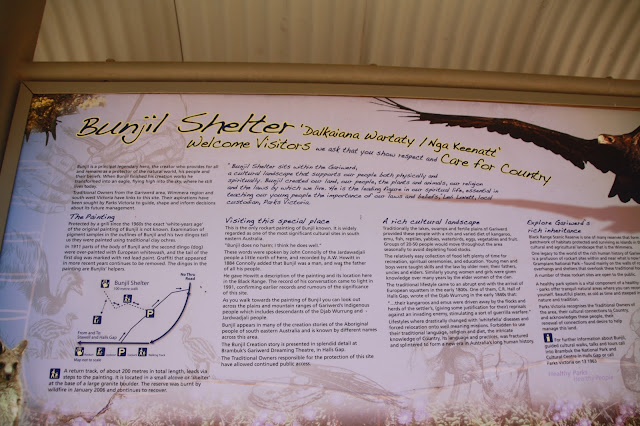An information board in the carpark gave us directions to the site, which was just a short distance away.
Sandy gravel paths and stone steps led up to the rock formations on the hill.

In the 1960's, a fence was put around the cave to protect it from further vandalism. I didn't mind having to peer through the fence, for the privilege of being able to see such a significant piece of art in its original site.

The painting depicts Bunjil the creator and two dingoes, taking shelter in this cave. Red ochre and white clay coloured the portrait of the deity and his canine companions. It's the only known rock painting of Bunjil.
Some of the granite rocks had sheer faces, as if sliced by a huge knife. Others were smooth and round, like enormous eggs.The colours ranged from golden brown to dark charcoal in places.
The views from the site were amazing. The wide brown land was dotted with trees, which became increasingly more dense as it neared the Grampians in the distance. 

The 200m track was easy to walk and only a short section was steep.
The area was quiet, with only the sound of birds overhead and in the surrounding trees. I spotted a few wildflowers, but no wildlife.
Whilst we were there, only one other car arrived, making our visit that much more serene and we could imagine what it must have been like here over 8,000 years ago, when the artist painted the rock.
Well worth the visit.

What: Bunjil Shelter
Where: Bunjils Cave Rd, Black Range Scenic Reserve
When: Daily
Why: Aboriginal artHow much: FREE



No comments:
Post a Comment